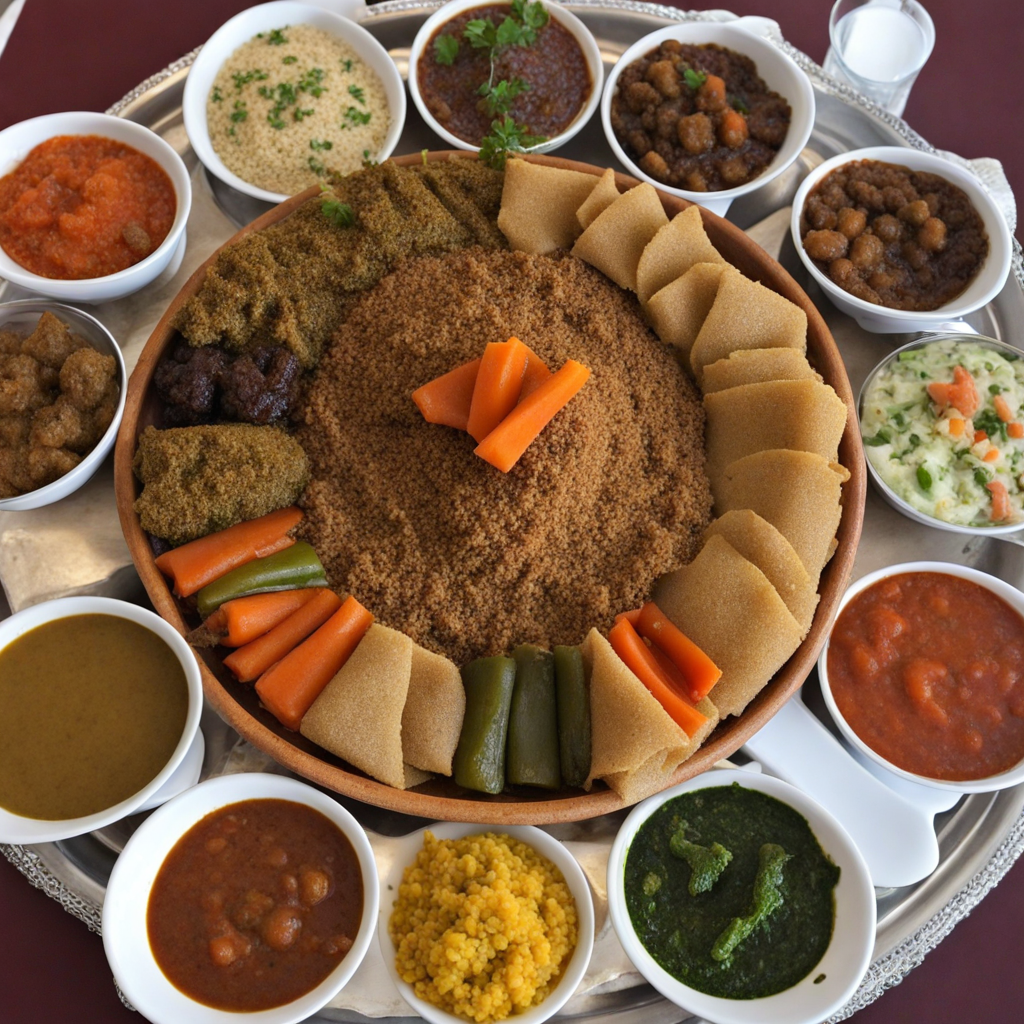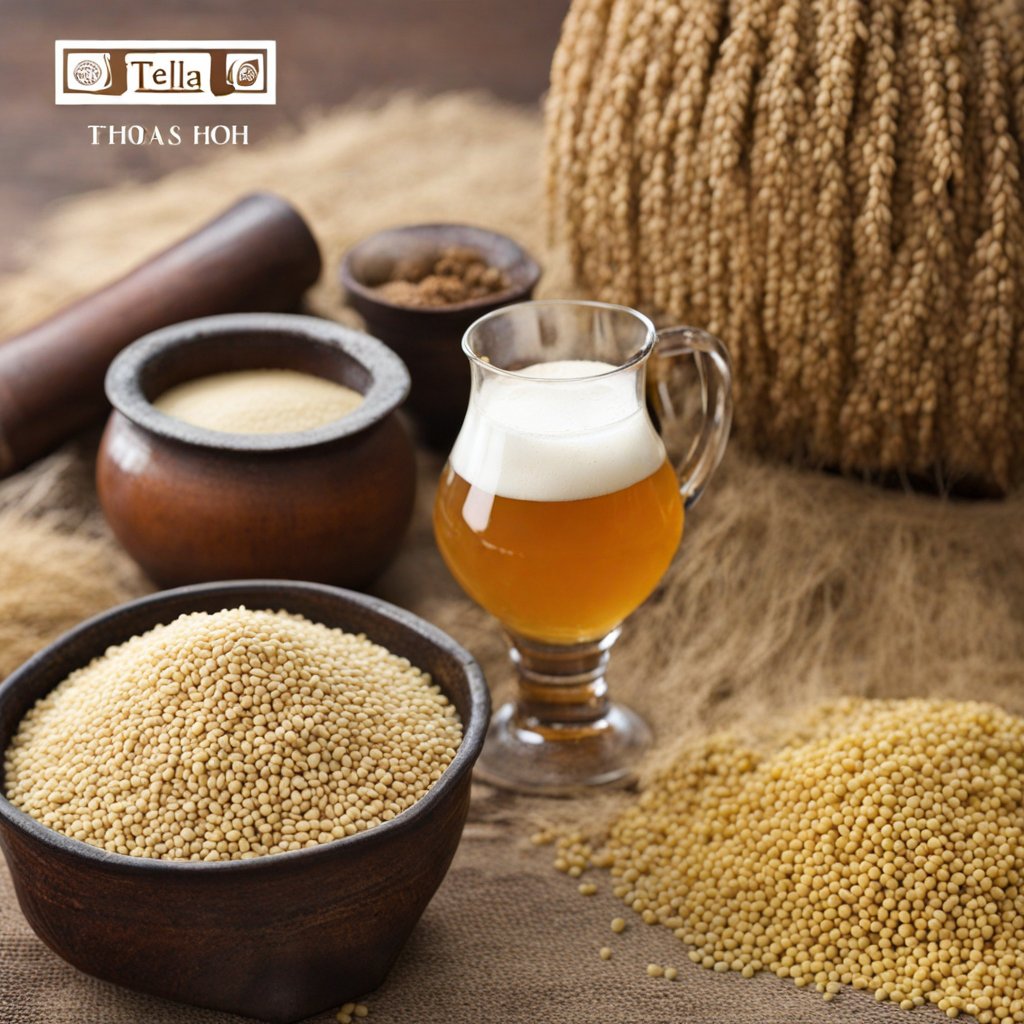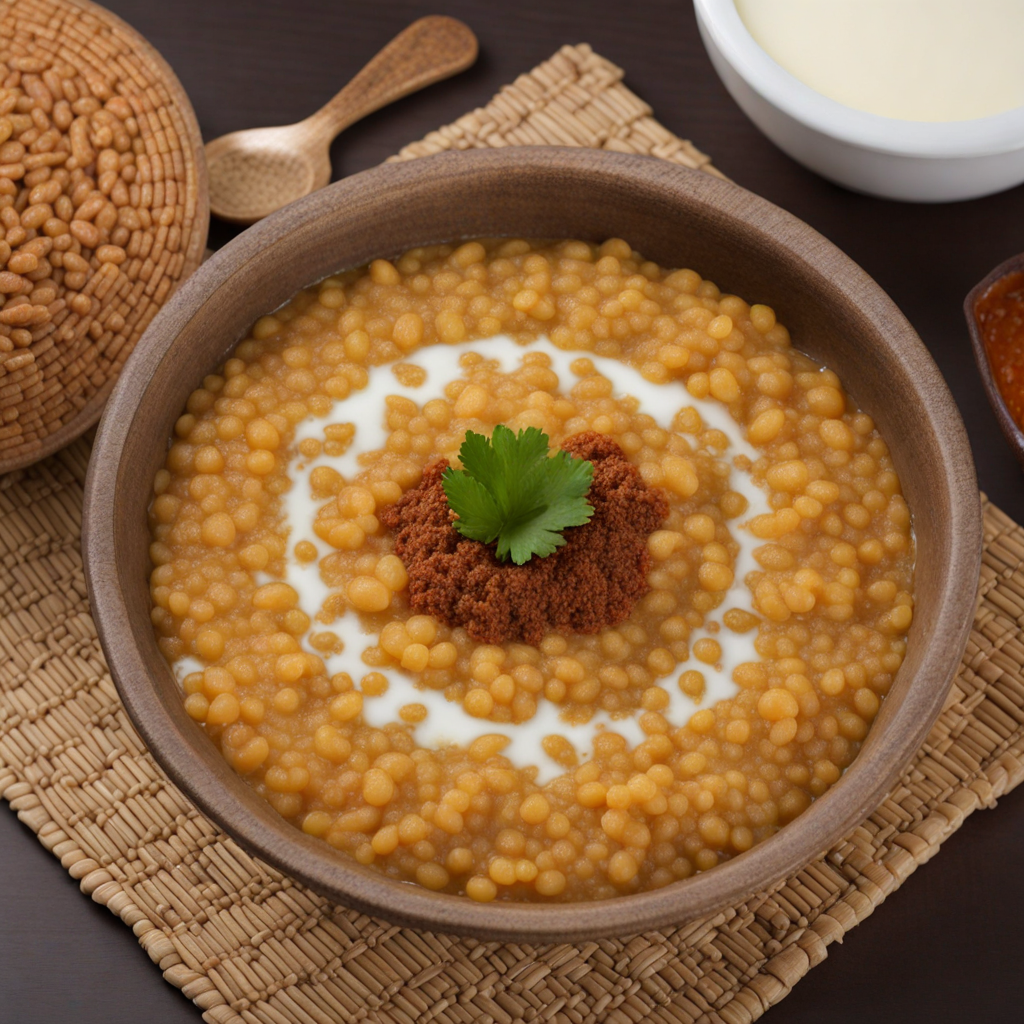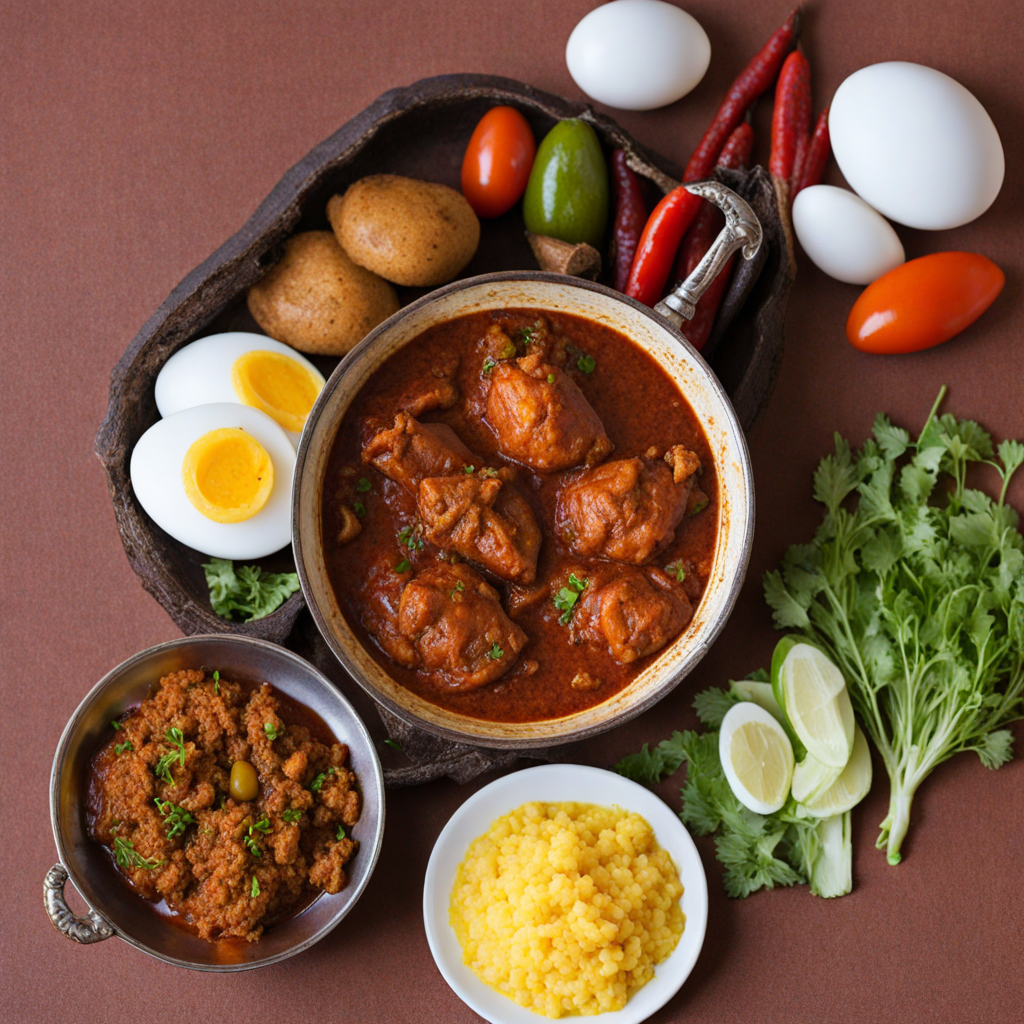Beyaynetu
Beyaynetu is a vibrant and flavorful Ethiopian dish that showcases the rich culinary traditions of the country. This communal platter features an array of colorful, aromatic stews known as "wot," which are served atop a large, round piece of injera—a sourdough flatbread made from teff flour. Each component of the Beyaynetu is carefully prepared using a unique blend of spices, including berbere, which lends a warm, spicy kick to the dishes. The combination of lentils, vegetables, and meats creates a delightful tapestry of flavors and textures, inviting diners to experience a true feast for the senses. The presentation of Beyaynetu is as important as its taste, often arranged in a circular fashion on the injera, with each stew occupying its own section. Diners traditionally use their hands to tear off pieces of injera and scoop up the stews, making the meal not only delicious but also a social experience. The variety of dishes can include spicy lentil stews (misir wot), sautéed greens (gomen), and flavorful chickpea stews (shiro), each offering its own distinct taste while complementing the others on the platter. The tanginess of the injera balances the spices and richness of the stews, creating a harmonious dining experience. For those looking to explore new flavors, Beyaynetu offers an exciting journey into Ethiopian cuisine. The dish is not only a celebration of the country's agricultural bounty but also a reflection of its cultural heritage, as meals are often shared among family and friends. Each bite is a delightful combination of earthy spices, fresh ingredients, and the unique texture of injera, making it a must-try for anyone eager to discover the diverse and delicious world of Ethiopian flavors.
How It Became This Dish
The History and Cultural Significance of በያይነቱ (Beyaynetu) in Ethiopia #### Origin of Beyaynetu Beyaynetu, which translates to "the variety" in Amharic, is a traditional Ethiopian dish that embodies the rich tapestry of the country’s culinary heritage. Originating from the highlands of Ethiopia, this dish is characterized by its assortment of flavorful stews and side dishes, typically served on a large platter of injera, a fermented flatbread made from teff flour. The roots of Beyaynetu can be traced back to the ancient civilizations of Ethiopia, where communal eating was not just a norm but a significant aspect of social life. Ethiopia's geographical diversity, with its mountainous terrains and fertile plains, has given rise to a wide range of agricultural products. The abundance of grains, legumes, vegetables, and spices found in the region has influenced the development of Ethiopian cuisine, making it both unique and varied. Beyaynetu showcases this diversity through its assortment of dishes, as it often includes a colorful array of stews (known as wot), salads, and lentils. #### Cultural Significance Culturally, Beyaynetu is much more than just a meal; it represents the Ethiopian ethos of community and sharing. Traditionally, meals are served on a communal platter, and diners gather around, using their hands to tear pieces of injera to scoop up the various stews. This practice fosters a sense of togetherness and connection, reflecting the communal values deeply ingrained in Ethiopian society. Beyaynetu is especially significant during special occasions and celebrations. It is often prepared for holidays, family gatherings, and other communal events, symbolizing hospitality and generosity. Ethiopian culture places a high value on sharing food, and Beyaynetu serves as a perfect embodiment of this principle. The dish allows for the inclusion of different flavors and textures, inviting everyone to partake in the bounty of the meal. In addition, Beyaynetu holds religious significance, particularly among Ethiopian Orthodox Christians. During fasting periods, which are observed for approximately half of the year, Beyaynetu is often prepared without meat, featuring an array of vegetarian and vegan options. This adherence to fasting traditions showcases the dish's versatility and ability to adapt to different dietary needs while remaining at the heart of communal meals. #### Development Over Time As Ethiopia has evolved through centuries of history—marked by the rise and fall of empires, colonization, and modernization—the culinary landscape, including Beyaynetu, has also transformed. The dish has adapted to incorporate new ingredients and influences while maintaining its traditional roots. During the Aksumite Empire (circa 100 AD to 940 AD), which is considered one of the great civilizations of the ancient world, trade routes facilitated the exchange of spices and cooking techniques. The introduction of spices such as berbere (a spice blend that includes chili powder, garlic, ginger, and other spices) and mitmita (a spicy powdered seasoning) enriched Beyaynetu's flavor profile. These spices became integral to Ethiopian cuisine and are quintessential to the preparation of wot, the stews that accompany Beyaynetu. In the 19th and 20th centuries, as Ethiopia faced external pressures, including the Italian occupation (1936-1941), culinary practices began to evolve further. While the occupation introduced some European elements to the cuisine, Ethiopians maintained their culinary traditions. The resilience of Ethiopian cuisine is evident in how traditional dishes like Beyaynetu continued to thrive despite foreign influences. The return to sovereignty and identity post-occupation led to a renaissance of Ethiopian cooking, with Beyaynetu taking center stage once again in national pride. In contemporary Ethiopia, Beyaynetu remains a staple in both homes and restaurants. Its popularity has spread beyond the borders of Ethiopia as the diaspora has introduced Ethiopian cuisine to the world. Ethiopian restaurants serving Beyaynetu have proliferated in major cities globally, showcasing the dish's appeal and versatility. Chefs often place their unique spins on traditional recipes, incorporating local ingredients while staying true to the spirit of the dish. #### Ingredients and Preparation Typically, a Beyaynetu platter includes a variety of stews, salads, and lentils. Common components might include: 1. Misir Wot: A spicy lentil stew made with red lentils, onions, garlic, ginger, and berbere spice. 2. Shiro: A chickpea flour stew, often with a smooth texture and rich flavor, enhanced by spices. 3. Gomen: Stewed collard greens, sautéed with garlic, onions, and spices, providing a fresh contrast to the heartier dishes. 4. Atayef: A salad made from diced vegetables, often dressed with lemon and spices, adding brightness to the platter. 5. Doro Wot: For non-fasting occasions, this chicken stew is a popular addition, marinated in spices and slow-cooked to perfection. The preparation of Beyaynetu is not just about cooking; it’s a communal event. Family members often come together to prepare the various components, creating bonds and memories in the process. The act of serving Beyaynetu is also ceremonial, with the host presenting the platter as a symbol of abundance and hospitality. #### Conclusion Beyaynetu is a vibrant representation of Ethiopia's rich culinary heritage and cultural identity. Its origins reflect a history of communal eating and shared experiences, while its development over time showcases the resilience of Ethiopian cuisine in the face of external influences. Whether enjoyed during a festive occasion or a casual family meal, Beyaynetu continues to nourish both the body and the soul, serving as a delicious reminder of Ethiopia's diverse cultural tapestry. As the world becomes more interconnected, the allure of Beyaynetu transcends borders, inviting all to experience the warmth and richness of Ethiopian hospitality.
You may like
Discover local flavors from Ethiopia







